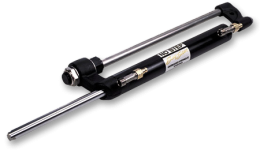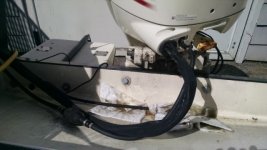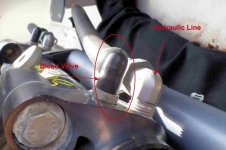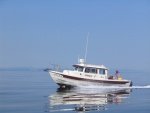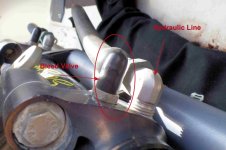Progress! I've got all the plumbing hooked up, and I'm ready to charge the system with fluid, bleed out the air, and check for leaks. Got a friend coming over for that. He has a sailboat, but don't worry, he's really an OK guy.

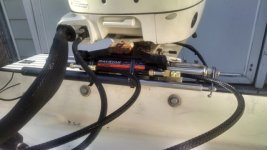
Some notes on issues I encountered:
There is no reasonable alternative to buying a $100 pair of 20' hoses to complete this installation. The magic BayStar tubing was so easy to install that it obviated any effort to save money putting together the tubing and fittings myself. I couldn't re-use the old hoses because (1) they changed the fitting and (2) they aren't nearly long enough for the new cylinder geometry, which moves with the engine as you steer. The old cylinder was static during steering, and the hoses were cut to length.
The BayStar/SeaStar folks are GOOD PEOPLE. I had trouble with the largest nuts, the "Mount Nut, support bracket". It became unreasonably difficult to turn, and I was certain it was not cross-threaded, but I was also sure it wasn't on all the way. There was still side-to-side play in the suport rod, which would create slop in the steering. It turned out that the nylon insert was either defective or not seated properly...impossible to know which after I had mangled it by forcing it to continue turning! I described the problem in email, and they just sent me a replacement. No paperwork, no "ship us the defective part first", no trouble at all.
The linear rudder position sensor for my autopilot (black cylinder mounted below the BayStar unit with hose clamps) works fine, but has to be mounted way off to one side to index the center position with the centered engine. ALSO, it initially read the rudder position IN REVERSE. Full right showed full left, and vice-versa. Because why? Because the new cylinder's geometry works in reverse. Ram is static, cylinder moves, rather than cylinder static/ram moves. The solution was extremely simple, but I had to read the manual to realize how easy it would be: Swap the red and green wires where they enter the autopilot computer.
Hope these details are helpful to someone down the line!


